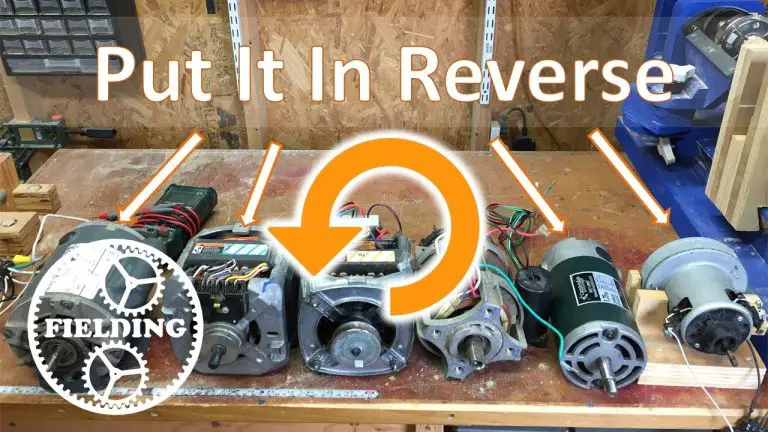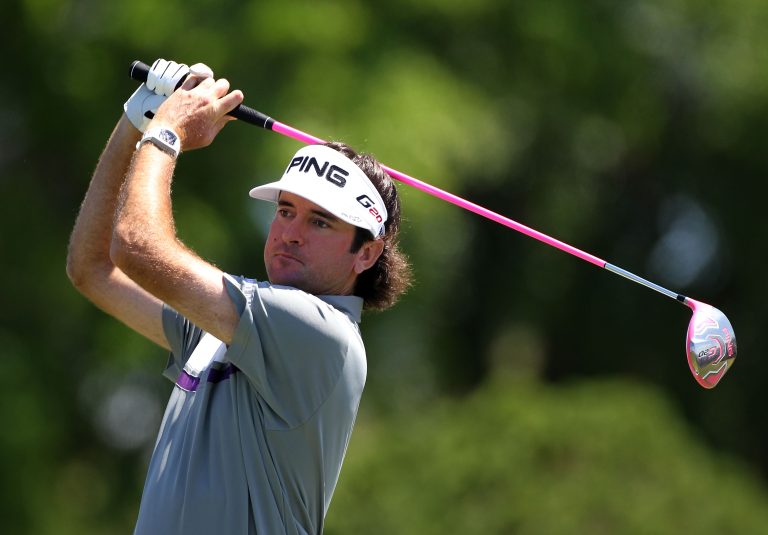Why Is My Gas Golf Cart Backfiring
Gas-powered golf carts provide a convenient and enjoyable way to navigate golf courses and recreational areas. However, if you’ve noticed your gas golf cart emitting sudden, loud noises akin to backfiring, it can be quite disconcerting. Backfiring occurs when the combustion process in the engine is disrupted, resulting in a sharp popping or banging sound. Understanding the reasons behind this issue is crucial in order to address it effectively.
In this comprehensive guide, we will delve into the topic of why gas golf carts backfire and explore the various causes that can contribute to this problem. Whether it’s related to the fuel system, ignition system, or exhaust system, we will examine each potential factor in detail. By understanding the underlying causes, you’ll be better equipped to troubleshoot and find appropriate solutions.
Join us as we explore the inner workings of gas golf carts, the key components involved, and how they can give rise to backfiring. We’ll provide practical insights, actionable tips, and step-by-step troubleshooting methods to help you diagnose and resolve the backfiring issue. Additionally, we’ll discuss preventive measures to maintain the optimal performance of your gas golf cart and ensure a smooth and enjoyable ride.
Let’s uncover the reasons behind your gas golf cart’s backfiring and get you back on the course with confidence and peace of mind.

Understanding Gas-Powered Golf Carts
Before delving into the causes and solutions for backfiring, it’s essential to understand the key components of gas-powered golf carts. By gaining insights into the engine, fuel system, ignition system, and exhaust system, we can better comprehend the potential factors contributing to backfiring. Let’s take a closer look at these components and how they function in a gas golf cart.
Engine
The engine is the heart of a gas golf cart and plays a crucial role in its performance. It utilizes a combustion process to generate power and propel the cart forward. Understanding the engine’s inner workings, including the fuel-to-air mixture, is vital in diagnosing backfiring issues.
Fuel System
The fuel system is responsible for delivering the correct amount of fuel to the engine. It comprises components such as the fuel tank, fuel pump, carburetor or fuel injectors, and fuel lines. Issues within the fuel system can disrupt the combustion process and lead to backfiring.
Ignition System
The ignition system is responsible for initiating the combustion process within the engine. It includes spark plugs, ignition coils, and the ignition timing mechanism. Problems with the ignition system can cause misfires and backfiring in gas golf carts.
Exhaust System
The exhaust system is designed to remove exhaust gases from the engine and minimize noise levels. A malfunctioning or damaged exhaust system can contribute to backfiring due to improper gas flow and pressure imbalances.
Causes of Backfiring in Gas Golf Carts
Backfiring in gas golf carts can stem from various underlying issues. Understanding these causes is crucial in effectively troubleshooting and resolving the problem. Let’s explore the potential reasons behind backfiring and examine each in detail.
Improper Fuel-to-Air Mixture
One common cause of backfiring is an incorrect fuel-to-air mixture within the engine. This imbalance can disrupt the combustion process, leading to backfires. Several factors contribute to an improper mixture:
- Dirty or clogged carburetor: A carburetor that is dirty or clogged with debris can affect the fuel-to-air ratio, resulting in backfiring.
- Faulty fuel pump: A malfunctioning fuel pump can disrupt the fuel delivery to the engine, leading to an imbalanced mixture and subsequent backfiring.
- Malfunctioning fuel injectors: If your gas golf cart is equipped with fuel injectors, malfunctioning injectors can cause uneven fuel distribution and result in backfiring.
Ignition System Issues
Problems within the ignition system can also contribute to backfiring. The ignition system plays a vital role in initiating the combustion process. Issues to consider include:
- Faulty spark plugs: Worn-out or faulty spark plugs can cause inconsistent ignition and lead to misfires and backfiring.
- Incorrect ignition timing: If the ignition timing is set incorrectly, it can disrupt the combustion process, resulting in backfires.
- Damaged ignition coil: A damaged or malfunctioning ignition coil may lead to irregular sparks, causing backfiring in the engine.
Exhaust System Malfunctions
Issues within the exhaust system can impact the flow of exhaust gases, leading to backfiring. Consider the following factors:
- Clogged or damaged muffler: A clogged or damaged muffler can restrict the flow of exhaust gases, causing pressure imbalances and leading to backfiring.
- Exhaust leaks or cracks: Leaks or cracks in the exhaust system can result in the intake of fresh air during the exhaust stroke, causing backfiring.
Troubleshooting Gas Golf Cart Backfiring
To address the issue of backfiring in your gas golf cart, it’s important to diagnose the specific cause and take appropriate troubleshooting steps. Here are some practical measures to consider:
Checking the Fuel System
The fuel system plays a crucial role in maintaining the proper fuel-to-air mixture. Perform the following checks:
- Inspect and clean the carburetor: If your golf cart is equipped with a carburetor, inspect it for any signs of dirt, debris, or clogs. Clean the carburetor thoroughly or consider professional cleaning if needed.
- Verify fuel pump functionality: Check the fuel pump for proper operation. Ensure that it is delivering fuel consistently and at the correct pressure. Replace the fuel pump if it is malfunctioning or failing.
- Examine fuel injectors for clogs or malfunctions: If your golf cart utilizes fuel injectors, inspect them for clogs or malfunctions. Clean or replace the injectors as necessary to ensure proper fuel distribution.
Assessing the Ignition System
A well-functioning ignition system is essential for proper combustion. Take the following steps to troubleshoot ignition system issues:
- Check spark plugs and replace if necessary: Inspect the spark plugs for signs of wear, damage, or fouling. Replace any worn-out or faulty spark plugs with the appropriate ones recommended by the manufacturer.
- Adjust ignition timing: Ensure that the ignition timing is set correctly according to the manufacturer’s specifications. Adjust the timing if it is out of sync, but exercise caution or seek professional assistance if you’re not familiar with this procedure.
- Test and replace a faulty ignition coil: If you suspect a faulty ignition coil, perform a diagnostic test using a multimeter. Replace the ignition coil if it is found to be defective.
Inspecting the Exhaust System
The exhaust system plays a critical role in directing exhaust gases away from the engine. Consider the following steps to troubleshoot exhaust system issues:
- Clear any obstructions in the muffler: Inspect the muffler for clogs, debris, or blockages. Clear any obstructions to ensure proper exhaust flow and prevent backfiring.
- Repair or replace damaged exhaust components: Examine the exhaust system for leaks, cracks, or damage. Repair or replace any faulty components, such as the muffler or exhaust pipes, to restore proper functioning.
Seeking Professional Help if Issues Persist
If the troubleshooting steps outlined above do not resolve the backfiring issue, or if you are unsure about performing the diagnostics yourself, it is recommended to seek professional assistance. A qualified golf cart mechanic or technician will have the expertise and specialized equipment to diagnose and address more complex issues.
Preventive Measures
Prevention is always better than cure when it comes to backfiring in gas golf carts. Here are some preventive measures to maintain the performance and reliability of your golf cart:
- Regular maintenance routines: Follow the manufacturer’s recommended maintenance schedule for your gas golf cart. This includes regular inspections, tune-ups, and component replacements as needed.
- Use high-quality fuel: Always use high-quality fuel with the correct octane rating recommended by the manufacturer. Poor-quality fuel can lead to issues in the fuel system, resulting in backfiring.
- Keep the fuel system clean: Regularly inspect and clean the fuel system components, including the carburetor and fuel injectors. This helps prevent the accumulation of dirt, debris, and deposits that can disrupt the fuel flow and cause backfiring.
- Maintain the ignition system: Regularly check and clean the spark plugs to ensure proper ignition. Replace worn-out or damaged spark plugs promptly. Additionally, keep the ignition system components, such as the ignition coil and wires, in good condition.
- Inspect the exhaust system: Routinely examine the exhaust system for any signs of damage, leaks, or corrosion. Repair or replace any faulty components to maintain proper exhaust flow and prevent backfiring.
- Follow manufacturer guidelines: Adhere to the manufacturer’s guidelines and recommendations for your specific gas golf cart model. This includes using the recommended fuel, lubricants, and following maintenance procedures.
- Address issues promptly: If you notice any unusual symptoms or performance issues in your gas golf cart, address them promptly. Ignoring warning signs can lead to more severe problems, including persistent backfiring. Consult the manufacturer’s manual or seek professional assistance to diagnose and resolve any detected issues.
By implementing these preventive measures, you can significantly reduce the chances of experiencing backfiring in your gas golf cart and ensure its optimal performance and longevity.
Conclusion
Backfiring in a gas golf cart can be a frustrating issue, but by understanding the causes and following the appropriate troubleshooting steps, you can address the problem effectively. Whether it’s an improper fuel-to-air mixture, ignition system issues, or problems within the exhaust system, taking the necessary actions can resolve backfiring and restore your golf cart’s smooth operation.
Remember to check and maintain the fuel system, ignition system, and exhaust system regularly. Follow preventive measures, such as using high-quality fuel, keeping components clean, and promptly addressing any issues that arise. If troubleshooting efforts prove challenging or backfiring persists, don’t hesitate to seek professional assistance from a qualified golf cart mechanic or technician.
With proper care and attention, you can enjoy a backfire-free experience while cruising around the golf course or your favorite recreational areas with your gas-powered golf cart.






